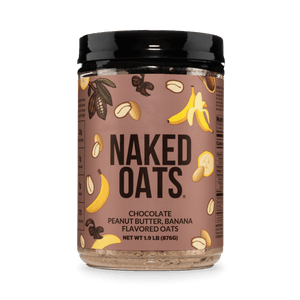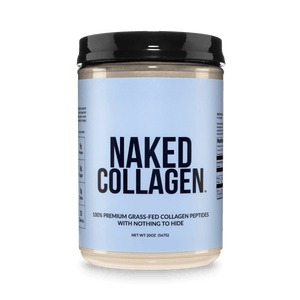
Supplements
Does Creatine HCL Cause Bloating? What Science and Users Say
The Creatine Bloating Myth Creatine is one of the most researched and effective supplements for improving strength, building muscle, and enhancing exercise performance. However, there are many misconceptions about creatine especially when it comes to feeling bloated and puffy. The fear of creatine causing puffiness, bloating, or just general discomfort keeps many people from trying a supplement that has the...

When to Take Zinc: Morning or Night?
Who This Guide Is For: Zinc supplement users confused about optimal timing for maximum absorption and benefits Health-conscious individuals wanting to maximize their supplement effectiveness Athletes and fitness enthusiasts optimizing their supplement schedules around workouts People with digestive sensitivities seeking the best timing to minimize side effects Shift workers and irregular schedules needing flexible supplementation strategies Healthcare providers counseling patients...

The Complete Guide to Using Collagen Peptides: Benefits, Types & Daily Tips
Ever wondered why collagen peptides have become a staple in wellness routines? These versatile supplements offer numerous benefits for your skin, joints, and overall health. As collagen production naturally decreases with age, incorporating these peptides into your daily regimen can help maintain that youthful glow and physical mobility. Knowing how to use collagen peptides effectively can maximize their benefits. Whether...

Vitamin D3 vs D2: Which One Should You Take?
Quick Answer – Is D3 Better Than D2? Vitamin D3 is generally more effective at increasing vitamin D levels in the body compared to vitamin D2. Vitamin D3 increases serum 25-hydroxyvitamin D concentrations efficiently and effectively as it is more readily absorbed by the body than D2. Vitamin D3 can more sustainably maintain healthy vitamin D levels since this form...


When Is the Best Time to Take Vitamin D?
7 min read
What Blocks Zinc Absorption? A Science-Backed Guide to Common Inhibitors and Fixes
Why Zinc Absorption Matters Zinc is a micronutrient that supports nearly every body system. It plays a crucial role in immune function, hormone regulation, wound healing, and maintaining healthy skin, hair, and nails. Zinc contributes to us having a sense of taste and smell, DNA synthesis, and cell growth—making it especially important during periods of rapid development such as childhood,...

Is Your Zinc Supplement Absorbed Well? A Science-Backed Guide to Bioavailability
Zinc is one of the most important nutrients for the human body. But simply ensuring you get enough zinc in your diet does not mean you’re actually absorbing it. This article will explain why zinc absorption is more important than you think, and ways to ensure you’re optimizing its absorption. **Disclaimer: This content is for informational purposes only and does...

Can You Take Creatine on an Empty Stomach?
If you work out first thing in the morning, you may want to take creatine on an empty stomach. There is nothing wrong with taking creatine on an empty stomach, but doing so can cause stomach issues. Key Takeaways: It is safe to take creatine on an empty stomach. Creatine can cause digestive symptoms such as bloating, nausea, and gas,...

Colostrum Benefits for Adults: What the Science Really Says
Colostrum has gained a lot of traction in the health and wellness industry recently. If you haven't heard of colostrum before, it is the first form of milk, and it is typically produced for the first 2-5 days after birth in mammals. It is a thick, off-white or yellowish liquid that can be released by the mammary glands in humans...

Is Colostrum Good for You? Benefits, Science & Safety
Colostrum is the first form of milk produced by mammals, including humans and cows, in the first few days after giving birth. It’s a thick, yellowish substance rich in nutrients, antibodies, and growth factors designed to support a newborn’s immune system and development. Human colostrum has been recognized for its important role in infant health. However, bovine colostrum, which is...

Is Creatine Safe for Teens? What the Science Says About Adolescent Supplementation
Many parents and teen athletes wonder whether creatine supplementation is safe for developing bodies. The direct answer: Short-term creatine use appears safe for healthy teens, but major medical societies recommend caution due to limited long-term safety data and unknown effects on growth and development. Let's take a look at what the current research tells us about creatine safety in adolescents...

What is Grass-Fed Collagen? Benefits, Sources and How It Boosts Your Health
Ever wondered why some collagen supplements claim to be "grass-fed"? If you're navigating the world of collagen supplements, you've likely come across this term and questioned its significance for your health journey. Grass-fed collagen comes from cattle raised on pasture diets rather than conventional grain-based feed. This distinction isn't just marketing—it reflects differences in the collagen's characteristics that may influence...

How Does Vitamin C Boost Collagen Production?
Collagen is the most abundant protein in the human body. It plays a vital role in maintaining the structure and function of skin, bones, joints, and connective tissue. As people age, collagen production naturally begins to decline, leading to signs of aging such as wrinkles and joint pain.While the body can produce collagen on its own, we can also get...













